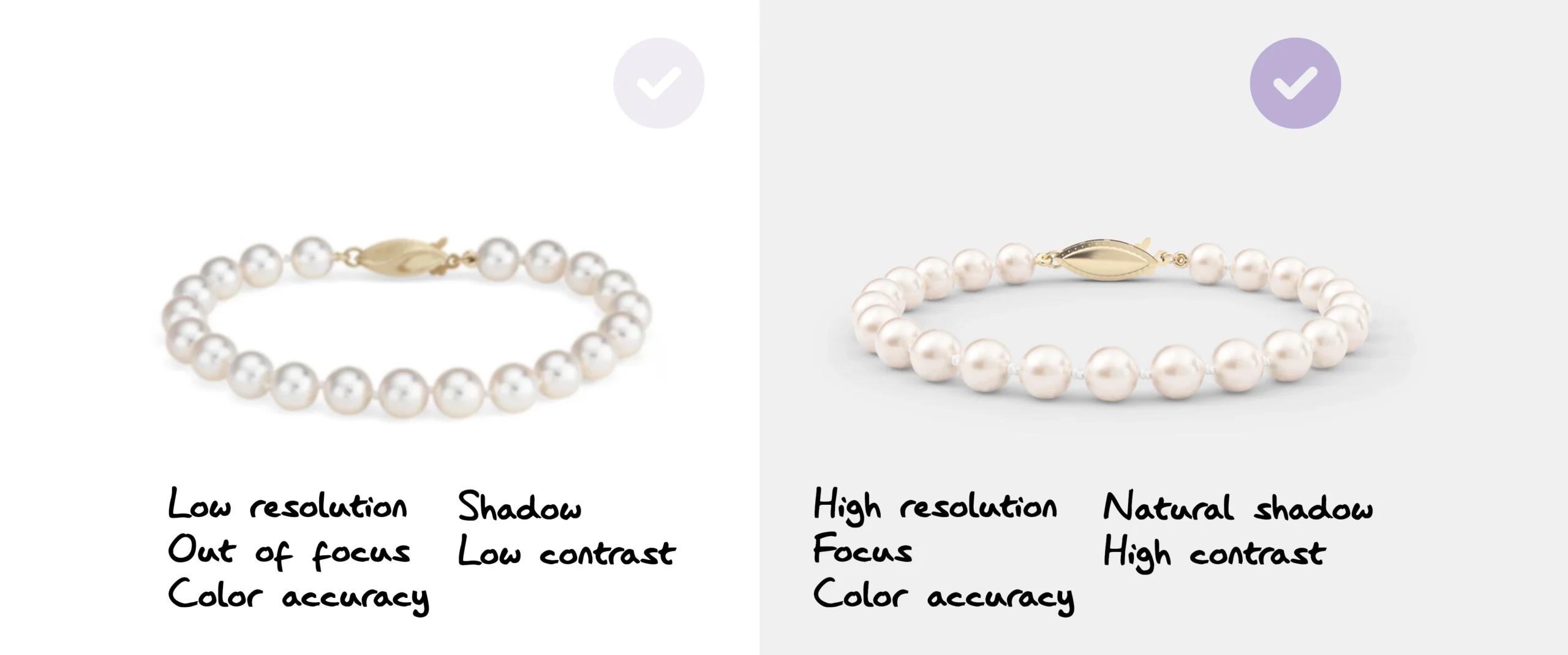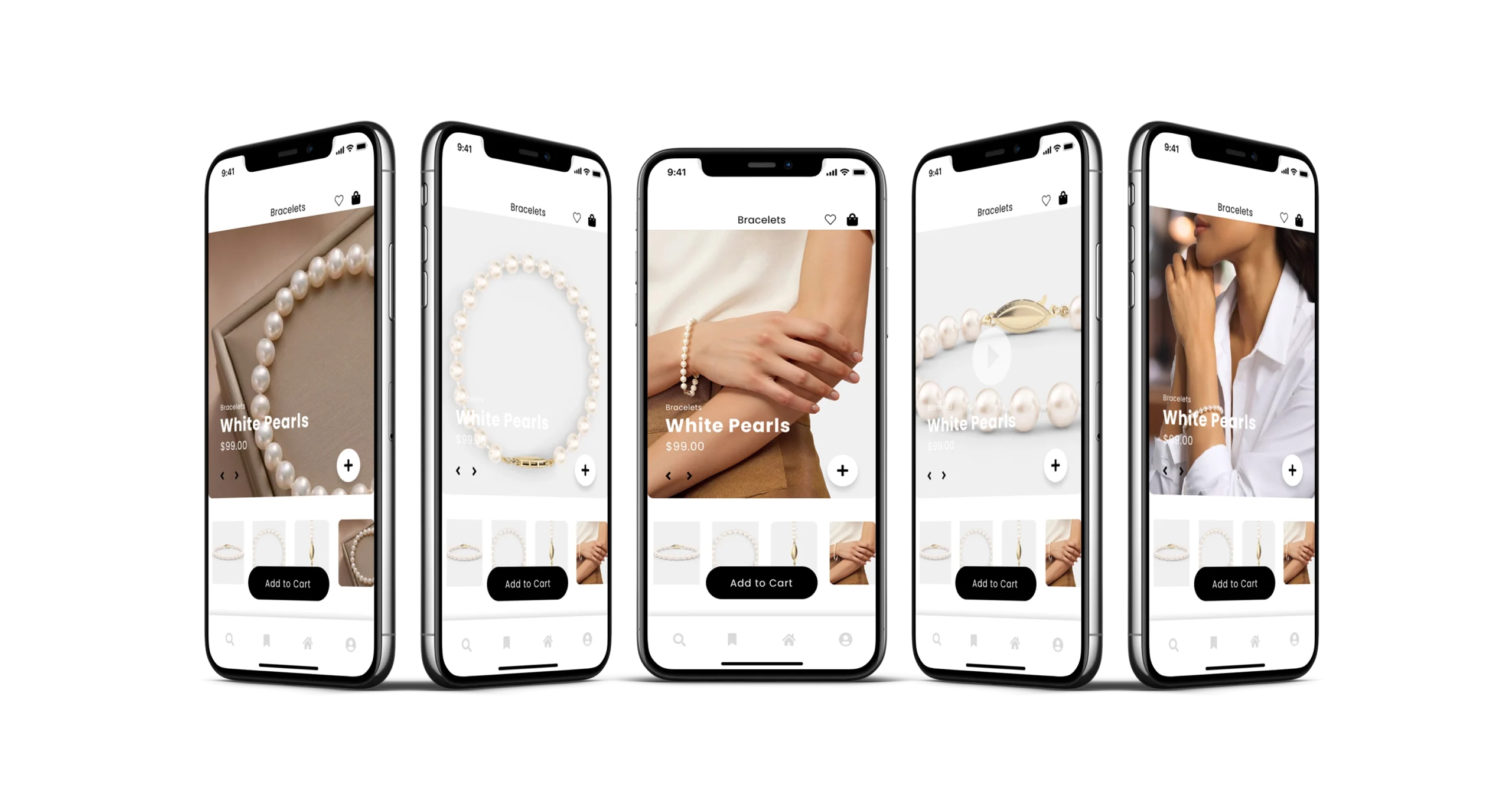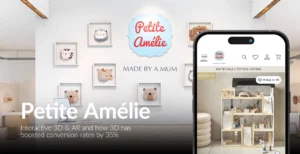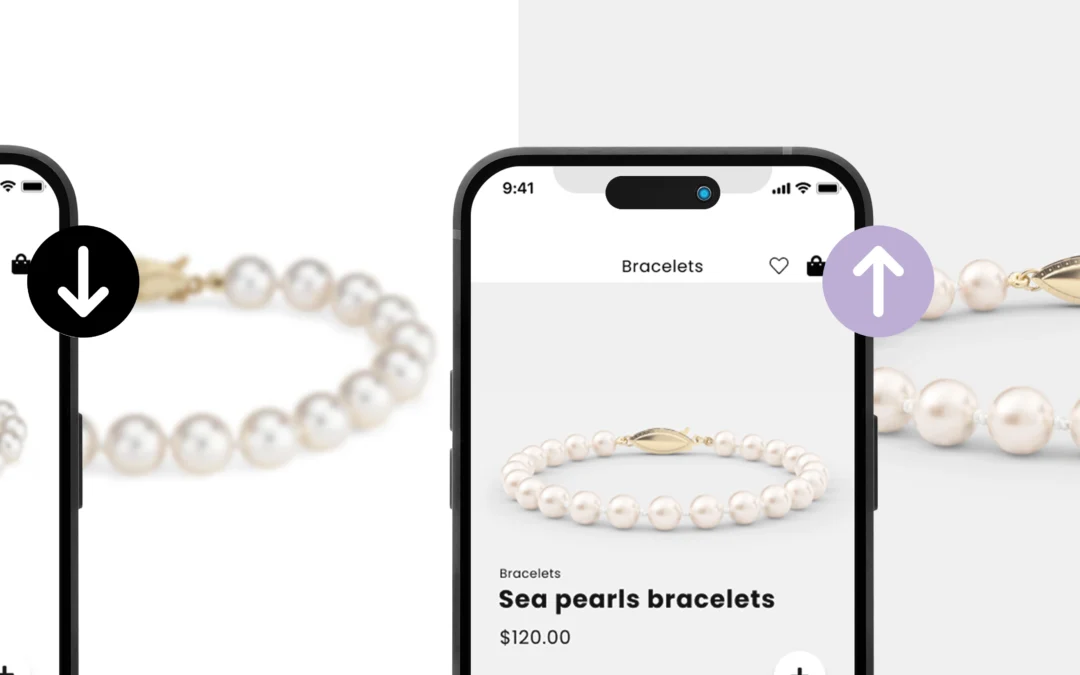The power of visuals in the jewelry market
Jewelry buying is a sensory experience, and customers crave rich, detailed imagery to recreate that sensory experience online. When someone can’t physically touch or try on a piece, they depend on visuals to understand the sparkle, texture, and scale of the item. High-quality visuals help bridge that gap by providing as much sensory information as possible, creating a tangible connection between the customer and the product.
Why low-quality images don’t cut it
- Lack of detail: Jewelry is defined by its intricate craftsmanship. Low-resolution images or basic product shots fail to showcase these finer details, leaving customers unsure about the product’s true quality.
- Reduced trust: High-end jewelry buyers expect a luxurious experience across all touchpoints, including the website. Low-quality images can make a site look unprofessional and raise doubts about the brand’s authenticity.
- Missed opportunities for unique presentation: Without high-quality visuals, customers can’t fully appreciate the jewelry’s unique aspects—like the way light catches a gemstone or the complexity of a design—which may lead to missed sales opportunities.

How diverse visual content drives sales
- Detailed product shots: Close-up, high-quality product shots allow customers to appreciate the finer details, textures, and colors of each piece, offering a realistic sense of the jewelry’s look and feel.
- On-model images: Seeing jewelry on a model provides essential context—customers get a sense of how the piece fits, its size relative to the body, and how it complements different skin tones or styles. These visuals make it easier for shoppers to imagine themselves wearing the jewelry, which often translates to higher sales.
- Lifestyle images: By presenting jewelry in real-life settings, lifestyle images create a sense of aspiration, allowing customers to picture how the piece might look for specific occasions or settings. This storytelling aspect often makes products more desirable and reinforces the brand’s image as part of the customer’s lifestyle. With the emergence of AI generated images, possibilities are endless.

Pushing boundaries: 3D viewers and product videos
- 3D viewers: 3D viewers allow customers to interact with jewelry in a dynamic way, providing a 360-degree view that lets them examine every angle. This interactive experience gives customers a better feel for the piece and reduces uncertainty, which can be a significant barrier to purchase.
- Product videos: Videos show how the jewelry moves and sparkles, which is hard to capture in static images. They also demonstrate how the piece interacts with light, adding a level of authenticity and allure that stills alone can’t achieve. For high-ticket items, this visual confirmation often gives customers the extra push they need to click “Add to Cart.”
Conclusion: Investing in quality, high-engaging visuals pays off
For jewelry brands, the message is clear: investing in superior visuals isn’t just about looking good—it’s about thriving in a competitive digital marketplace. If you’re not already, consider upgrading your imagery and exploring interactive features to give your customers the captivating experience they crave and make their decision to buy an easy one.

Client Success Director


